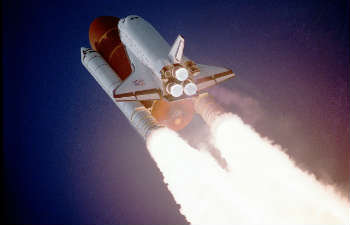The Story Behind NASA’s Human Computers
The little-known details of the women who worked behind the scenes at NASA recently came to light in the movie Hidden Figures. The fact that the women worked for NASA throughout the years of the space program is not the only surprising information about the human computers of NASA.
Discover astonishing details of the Hidden Figures at NASA and how they became involved in NASA’s space program. Learn about their contributions and why the women bore the title “Human Computers.”
What Were Human Computers?
When Langley Memorial Aeronautical Laboratory notified five women of their appointments to the “computer pool”, the women did not sit at a laptop, a desktop or any type of electronic computer. In 1935, there were no computers. So how did the women receive career positions to a computer pool if there were no computers? How did the women become known as “human computers?”
The answer is that the term human computers was a literal job title. The human computer job title referred to the women themselves. Although men initially performed some duties, women quickly overtook men as human computers. The “computers” were usually teachers, college graduates with a degree in mathematics or one of the other sciences, who performed complex mathematical equations and various calculations by hand. Their calculations and analysis performed by hand often took a week or more to complete.
During their first years as human computers, Langley was the primary research facility for the National Advisory Committee for Aeronautics or NACA, the precursor to NASA. The women also performed crucial jobs for the Jet Propulsion Laboratory (JPL). They performed crucial operations during WWII, in a day when there was no actual space program. When huge computers, weighing more than a ton, finally found their way into NACA, it was the human computers who programmed them and kept them running.
The Hidden Figures of NASA
At a time of segregation in the U.S., the thought of black women having the education and perseverance to work as human computers likely surprised many people of the day.
Segregation kept black women separate from white human computers. Black women worked as the segregated West Area Computers, according to NASA. The black human computers also experienced barriers to working in other positions.
Katherine Johnson is the most recognized of the black women who worked as human computers. In the 1950s, as the United States worked feverishly to surpass the Russian space program, NASA’s human computers, including Katherine Johnson, were right there performing the calculations and analyzing essential data. Johnson, Dorothy Vaughn, and Mary Johnson worked closely together and are the three African-Americans portrayed in the Hidden Figures movie.
Astronauts’ Trust In The African-American Human Computers
Although the movie Hidden Figures catapulted the black women serving as human computers to lasting fame, some prominent people recognized their exceptional capabilities in the early years of the space program.
Johnson is perhaps the best known among the three because, as Business Insider points out, it was on the basis  of Johnson’s work that helped send Alan Shepherd on his mission as the first American in space. She performed all the calculations, including where he would land upon return.
of Johnson’s work that helped send Alan Shepherd on his mission as the first American in space. She performed all the calculations, including where he would land upon return.
When John Glenn joined others in the new technology allowing man to venture into outer space, he trusted
Katherine Johnson over the white human computers. He said, “if she says the computer’s right, I’ll take it.”
Margot Lee Shetterly, author of the book Hidden Figures: The American Dream and the Untold Story of the Black Women Mathematicians Who Helped Win the Space Race, said in an NPR interview that Katherine Johnson often said she was just doing her job, probably the same way that Vaughn, Johnson, and the other human computers felt as they helped America win the space race.







